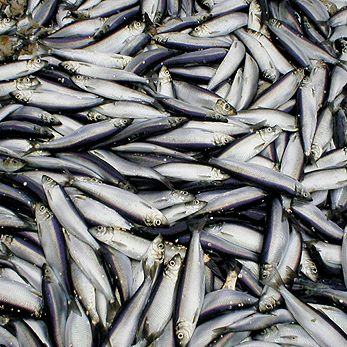What has been done?
Important developments in fisheries management
At the World Summit on Sustainable Development in 2002, OSPAR countries committed to maintain or restore stocks to levels that can produce the maximum sustainable yield (MSY), with the aim of achieving these goals for depleted stocks on an urgent basis, and where possible not later than 2015. All fisheries management regimes in the OSPAR area recognise the need for sustainable harvest rates and that fleet overcapacity needs to be addressed, in particular when stocks are outside safe biological limits. Some of the main developments in fisheries management in the OSPAR area since the QSR 2000 have been as follows:
- The adoption of long-term management plans for several commercial fish stocks. In EU waters, these include recovery plans for cod in the North Sea, Irish Sea and Celtic Sea; plaice and sole in the North Sea; and the northern stock of hake. Long-term management plans for mackerel, blue whiting and Norwegian spring spawning (Atlanto-Scandian) herring have been adopted by coastal states and NEAFC. All these plans include targets for fish stocks to be harvested at fishing mortalities that correspond to MSY.
- The continued management of fisheries in Region I through quota-based systems allocating either a share of the total allowable catch (TAC) or fishing days. This has been complemented by increased use of closed areas both for stock recovery and protection of vulnerable marine ecosystems (VMEs).
- Abolition of some of the financial subsidies that previously promoted excess fishing capacity.
- Increased attention to the management of deep-sea fish species. This has included controls on deep-sea fishing effort managed by the EU and NEAFC, including quotas and temporary and seasonal closure of some fisheries, for example NEAFC measures on the pelagic redfish. In 2009, the UN FAO published a set of technical guidelines aimed at helping the fisheries sector reduce its impacts on deep-sea fish species and ecosystems.
- Initiation of a new EU policy on discards in 2007 to reduce unwanted by-catch and progressively eliminate discards in European fisheries. This has included a ban on high-grading in the North Sea from 1 January 2009, which has been extended to other parts of the Atlantic in 2010. Discards have also been banned in NEAFC High Seas fisheries from 2009. These actions will complement the bans on discards that have been in place in fisheries in Region I since the 1990s, in Faroese, Icelandic, Norwegian and Russian waters.
- Steps to address by-catch of marine mammals through the EU Common Fisheries Policy with measures such as acoustic deterrents (pingers) required in certain fisheries. The pelagic driftnet fishery for albacore tuna was banned in 2002 because of high cetacean by-catch. Driftnets are now banned in all EU waters. The EU is developing a policy on by-catch of seabirds and sharks.
- A reform of the ICES system for providing scientific advice on fisheries management. Within the EU, data for management advice are now provided through the new EU framework for data collection and Regional Advisory Councils have been set up to involve fishing industry stakeholders more closely in the decision-making process.
- The call of the UN General Assembly on states and regional fisheries management organisations to take measures to protect VMEs in the High Seas from the adverse impacts of bottom fisheries and to ensure the long-term sustainability of deep-sea fish stocks. In response, several large areas of the High Seas have been closed to bottom fishing by NEAFC for the purpose of protecting VMEs.
- Introduction of various area-based measures across the OSPAR area including closed areas, marine protected areas (MPAs) and gear management areas. Specific examples include closures for the protection of VMEs, such as cold-water corals; implementation of fisheries measures within MPAs; restrictions on the use of bottom gear in certain areas; and bans on the use of gillnets in the deep seas.
- Targeting of illegal, unregulated and unreported (IUU) fishing by sharing of blacklists between regional fisheries management authorities and port states, and improved port state control.
- The emergence of ecolabelling and certification for sustainable fisheries as market-driven initiatives toward sustainable fisheries.

